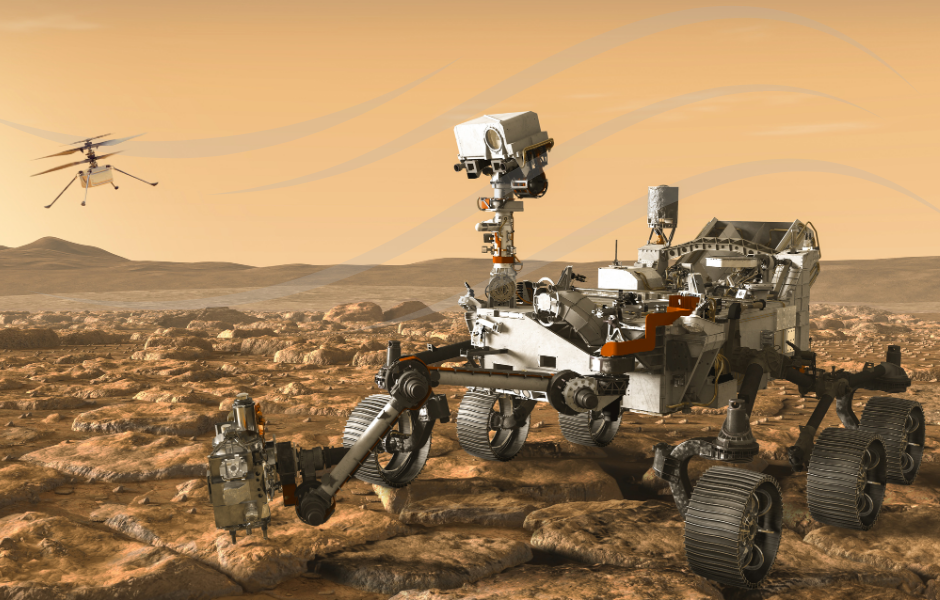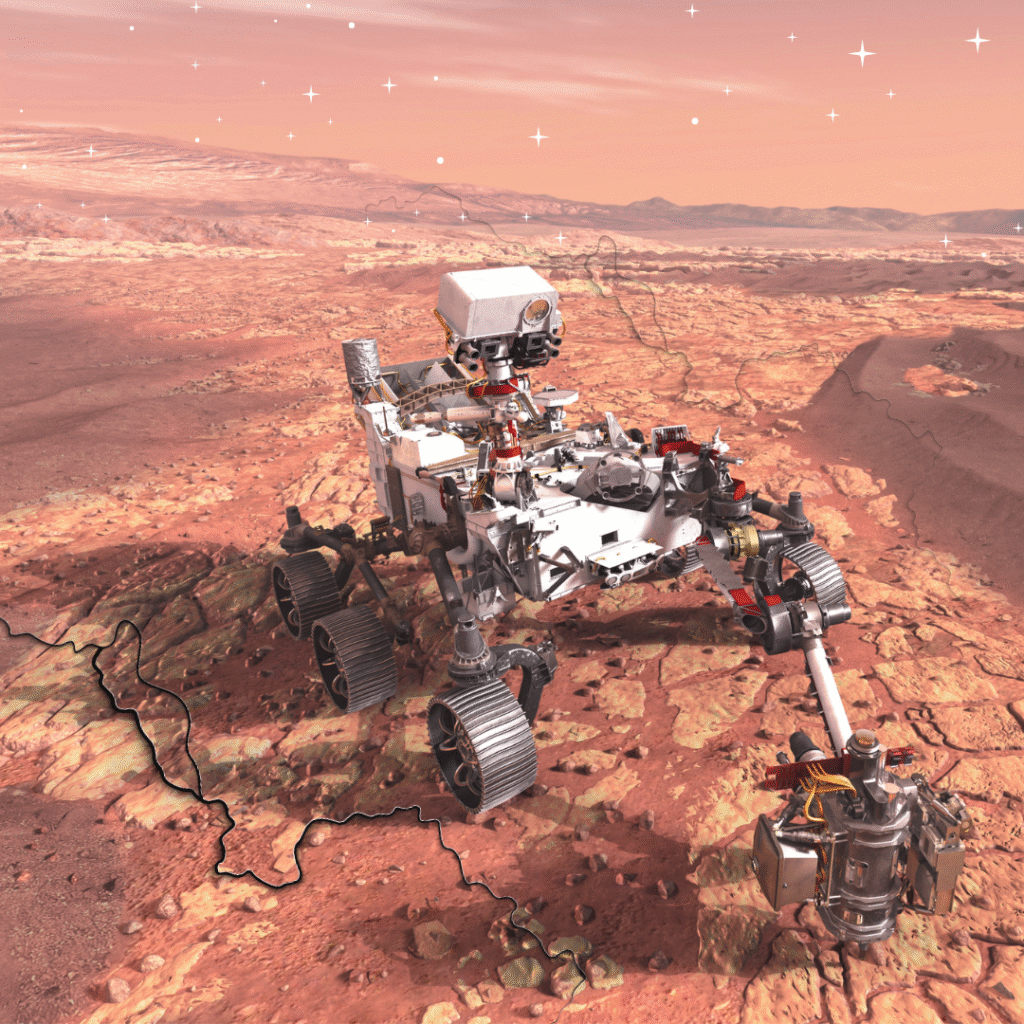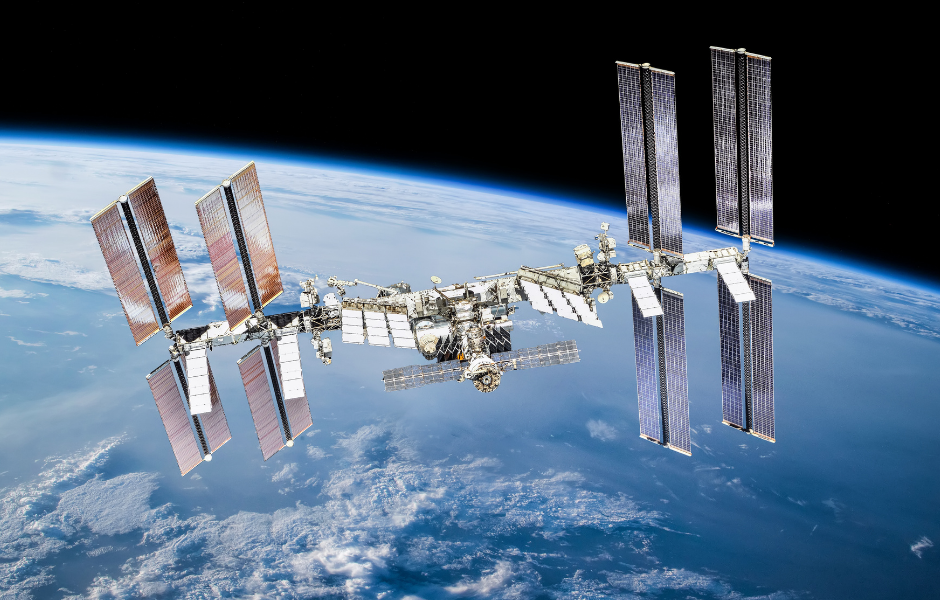
This children’s article, Meet the robots exploring Mars, has been written for native English speakers and learners of English as a second or foreign language. It can help children practise reading and comprehension, learn useful vocabulary, and explore science and space technology. Written by Mark Pulley, a writer and teacher who creates fun and informative news articles for English learners.
What is a Mars robot?
Robots on Mars are machines with cameras, wheels and scientific tools. They are sent to Mars to explore the planet, take photos, and search for clues about life. These robots are called “rovers” because they roam around the rocky surface of Mars, a bit like robot explorers.
Mars is very far away, about 225 million kilometres from Earth, which means we can’t just fly astronauts there quickly. It would take about six months to get there! So, scientists send robots first to learn lots about it before humans are sent to visit.
Who sent the robots?
The best-known Mars robots have come from NASA, the American space agency. They’ve sent several rovers to Mars over the years. The most famous ones are:
- Spirit and Opportunity landed in 2004
- Curiosity landed in 2012 and is still working
- Perseverance landed in 2021 and is now collecting rock samples
- Ingenuity, a small helicopter that flew alongside Perseverance, made the first powered flight on another planet!
These robots have discovered dried-up riverbeds, interesting rock layers, and even signs that Mars once had water, which could mean it may have had life long ago.
China’s Mars robot: Zhurong
In 2021, China became the second country to land and operate a robot on Mars. The Chinese space agency, CNSA, landed the Zhurong rover as part of its Tianwen-1 mission.
Zhurong explored the Utopia Planitia region, taking pictures, studying rocks, and measuring the weather. It worked for over a year before going silent, probably because dust covered its solar panels, meaning it lost power. Even though it seems to have stopped working, it was a huge achievement for China’s space agency.
What are they doing now?
Curiosity is currently exploring a big mountain called Mount Sharp, slowly climbing higher and taking photos.
Perseverance is collecting special rock samples that scientists hope to bring back to Earth one day. These samples might help us learn if there was ever life on Mars.
Although Ingenuity stopped flying in 2024, it flew over 70 times, which was much more than its inventors had expected!
NASA hopes to collect the Perseverance rock samples on its future missions. There are also plans for humans to visit Mars, possibly in the 2040s, and all of the robots are helping scientists plan for that day.
Will they last forever?
Nope! Mars is a tough place. It’s freezing cold, dusty, and with very thin air. Rovers that are solar-powered face problems when dust covers their panels. But some, like Curiosity and Perseverance, use nuclear power and can last much longer.
Each robot has a “mission length,” but they often keep working far beyond that. Opportunity was meant to last 90 days, but it survived for 15 years!

Article vocabulary list
- Rover – A robot vehicle that moves around to explore.
- Surface – The outside or top layer of something, like the ground.
- Solar panels – Flat parts that collect sunlight and turn it into electricity.
- Samples – Small pieces of rock or dirt collected for study.
- Mission – A special job or trip to complete a goal.
- Operate – To work or control something.
- Achievement – Something great or difficult that someone has done.
- Silent – Not making noise; here it means a robot has stopped working.
Comprehension questions
Just click the plus (+) to see the answer
1. Who sent the Curiosity and Perseverance rovers to Mars?
a) China
b) NASA
c) Russia
Answer: b) NASA
2. What is the name of China’s Mars rover?
a) Tianwen
b) Ingenuity
c) Zhurong
Answer: c) Zhurong
3. Why did the Zhurong rover stop working?
a) It ran out of batteries
b) It fell into a hole
c) Dust covered its solar panels
Answer: c) Dust covered its solar panels
4. What is Perseverance doing on Mars?
a) Flying around
b) Collecting rock samples
c) Digging tunnels
Answer: b) Collecting rock samples
5. How long did Opportunity last on Mars?
a) 90 days
b) 15 months
c) 15 years
Answer: c) 15 years

Mark is a writer and EFL teacher from England with eight years’ experience. He’s passionate about travel, sport (especially football), animals, nature, and history, and enjoys helping children explore the world through language and learning.




